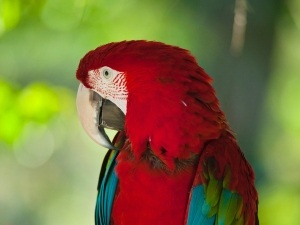
Humans aren’t the only animals that have emotions or that show emotions, your everyday pets, like your parrots, will also show emotions, emotions including anger.
This article is a look into how to know that your parrot is angry.
Table of Contents
How to know if a parrot is angry:
Understanding your bird’s emotional state will help you be a better bird owner and help you create a meaningful and successful relationship with your pet, anger is one emotion that parrots can exhibit.
Here are signs that show that your parrot is angry:
Growling:
Growling is something that we see dogs do but birds can do this too, your parrot included.
This can either be a sign from the parrot to leave it alone, or, it could be a warning before the parrot attacks whatever is in front of them.
Another vocalization that you may hear from your angry parrot is hissing. If your bird is hissing then you’d need to quickly remove whatever is threatening the bird before things start to get ugly.
Beak clicking:
Parrot beaks are quite large, in addition, the beaks are curved, and hooked and the beaks have a strong bite force. Angry parrots will click their beaks before biting.
Angry parrots will click their beaks several times in a series to warn whatever threat is close by to stay away, the clicking is also a warning against handling the bird.
Eye pinning:
If you get close enough to your angry parrot you may notice the bird pinning its eyes. Eye pinning happens when birds rapidly enlarge and shrink their pupils.
Birds can control their irises so they will show whatever or whoever is close to them that they are angry by pinning their eyes.
The eye pinning needs to be taken into context with its environment as the bird may also do this if they are frightened, excited, or afraid.
Making itself bigger:
This is what a bird will do before it actually attacks you in order to keep you away.
In the wild, the larger animals are usually stronger and more threatening, so your parrot will make itself look bigger by raising its tail feathers, fanning its tail, and opening its wings to ward off a threat, it also does this to also let you know that it is ready to fight.
Open mouth:
This is the last thing that you’ll see before a bird decides to bite you.
A bird with an open mouth usually does this because it is overheating but if the bird starts to open its beak and lunge towards you then the next step will be to actually bite you.
Biting:
You’ll know that a parrot is angry if it bites you or bites whatever is threatening it.
The above signs were the bird trying to warn you or the threat to stay away, if it gets to a point where the bird is biting you then the bird likely thought it had no other option than to bite to keep itself safe.
If you enjoyed this article then you may also be interested in other bird related articles. Here are some articles that you may be interested in: Budgie Cere Hypertrophy, Budgie Cere Overgrowth, Why Is My Budgie’s Beak Dry?, How To Tell If Birds Are Bonded To Each Other, Why Are My Bird’s Feathers Turning Grey?, Cockatiel Growth On Side Of Beak, Black Feather Fungus, Black Spots On Cockatiel Feathers, Conure Feathers Turning Black

